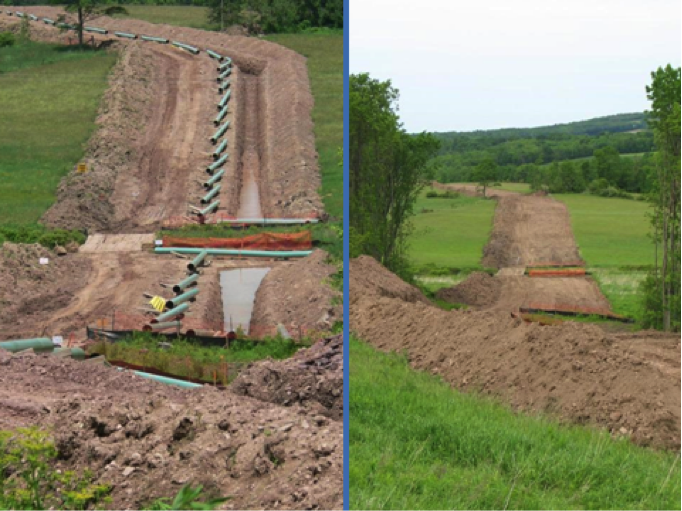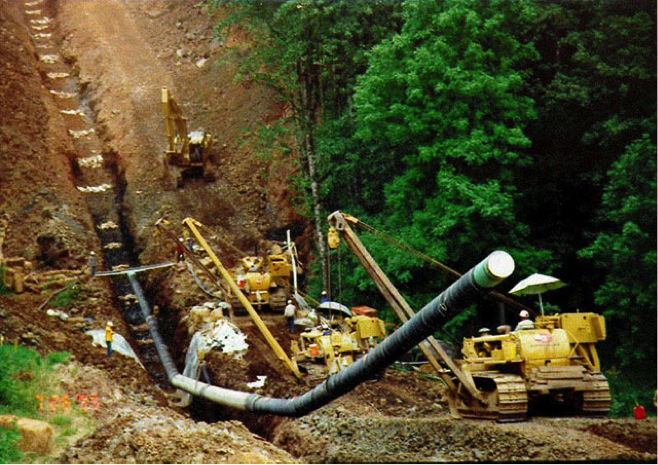Lowering the pipe into the trench
Once the pipe is welded, bent, and coated, it can be lowered into the previously dug trenches. This is done with specialized tracked construction equipment acting in tandem to lift the pipe relatively uniformly and lower it into the trench. After the pipe has been lowered into the ground, the trench is filled in carefully to ensure that the pipe and its coating do not incur damage. The last step in pipeline construction is the hydrostatic test, which consists of filling the pipe with water at pressures higher than will be needed for natural gas transportation, through the entire length of the pipe. This serves as a test to ensure that the pipeline is strong enough and absent of any leaks or fissures before natural gas is pumped through the pipeline.

